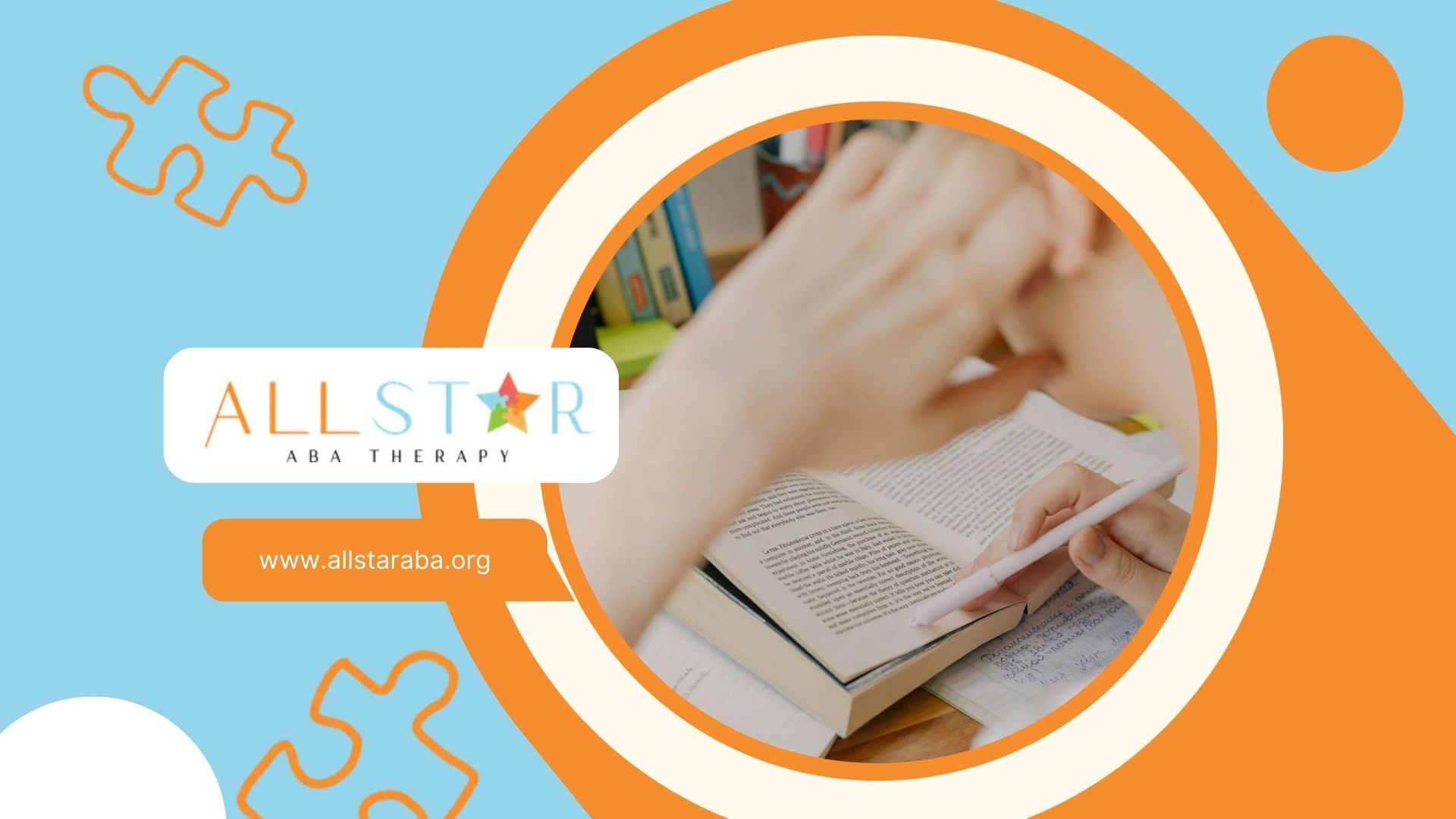New Paragraph
Transforming Lives: Understanding the Impact of RBT Job Duties
Understanding ABA Roles
In the field of Applied Behavior Analysis (ABA), two key professional roles stand out: Board-Certified Behavior Analysts (BCBAs) and Registered Behavior Technicians (RBTs). Both play vital roles in the treatment and development of individuals with Autism Spectrum Disorder (ASD) and related conditions.
Overview of BCBA and RBT
BCBAs are graduate-level clinicians who specialize in behavior analysis. They are responsible for the development and oversight of treatment plans, as well as the supervision of RBTs and other ABA paraprofessionals. BCBAs utilize their expertise to conduct behavioral assessments, analyze data, and create individualized programs for clients with ASD.
RBTs, on the other hand, are paraprofessionals who work directly under the supervision of BCBA and BCBA-D (Doctoral-level Board-Certified Behavior Analyst) professionals. Their role involves the direct implementation of behavior-analytic services, primarily the behavior intervention plans developed by BCBAs. They work closely with clients to foster skill acquisition and reduce problematic behaviors. RBTs are essential team members who provide hands-on support and make significant contributions to the effectiveness of ABA therapy.
Training and Certification Requirements
In order to become a BCBA, one must first attain a minimum of a master's degree in behavior analysis or a related field. Following this, individuals must complete a defined number of supervised hours and pass the BCBA certification examination. For detailed information on the certification process, please visit our page on BCBA certification requirements.
RBTs must complete a 40-hour training course covering various topics, including ABA principles, ASD characteristics, and ethical practices. They are also required to pass a competency assessment and the RBT certification examination. Post-certification, RBTs must meet RBT supervision hours to maintain their credentials and ensure high-quality service delivery. The BACB provides a comprehensive set of guidelines that outlines the scope of practice and ethical considerations for both BCBAs and RBTs, ensuring the highest standards are upheld in ABA services.
By understanding the roles and training requirements of both BCBAs and RBTs, stakeholders, including parents, educators, and healthcare professionals, can better navigate ABA services. This knowledge also helps clarify the professional dynamics between these two positions, as explored further in BCBA vs RBT.
RBT Job Duties Explained
Registered Behavior Technicians (RBTs) play a pivotal role in the delivery of Applied Behavior Analysis (ABA) services. Their responsibilities are critical in supporting individuals with Autism Spectrum Disorder and related conditions.
Direct Implementation of Plans
RBTs are primarily tasked with the direct implementation of treatment plans developed by Board Certified Behavior Analysts (BCBAs). These treatment plans are tailor-made to address the individual needs of clients and are aimed at both skill acquisition and behavior modification. The RBT job duties include teaching new behaviors, reinforcing desirable behaviors, and providing interventions as specified in the treatment plan.
One of the key components of plan implementation is the generalization of skills, where RBTs work with individuals in various settings. This ensures that the skills learned are not only retained but are also transferable to different environments, enhancing the individual’s adaptability and independence.
| Key Responsibilities | Description |
|---|---|
| Skill Acquisition | Facilitating learning and practicing of new skills. |
| Behavior Reinforcement | Reinforcing desired behaviors through positive reinforcement techniques. |
| Intervention | Implementing specific strategies to address targeted behaviors. |
| Generalization | Assisting individuals in applying learned skills across settings and situations. |
Data Collection and Analysis
An RBT’s role involves meticulous data collection to track the progress of individuals undergoing ABA therapy. They monitor and document the client’s responses to the interventions and skill acquisition programs. This data is crucial for evaluating the effectiveness of the intervention strategies and is used in ongoing assessments to make necessary adjustments to the treatment plan.
RBTs collaborate closely with BCBAs to analyze the collected data and discuss the outcomes. Such collaboration ensures a data-driven approach to modifying treatment plans, which is central to the success of ABA therapy.
Behavior Reduction Strategies
Reducing challenging or harmful behaviors is another significant aspect of an RBT’s role. RBTs are trained to implement behavior reduction interventions while ensuring a safe and supportive environment for the individual. Their approach to behavior reduction is to recognize the function of the behavior and apply strategies to minimize or eliminate it effectively.
In their efforts to reduce such behaviors, RBTs apply techniques that may include differential reinforcement, extinction, or antecedent modifications, among others. These strategies are employed with the utmost care and always under the guidance and supervision of a BCBA, aligning with the BCBA supervision requirements.
Effective behavior reduction strategies contribute to a better quality of life for individuals receiving therapy and support their integration into various social settings.
Understanding the distinctive roles and responsibilities of RBTs compared to BCBAs is essential for those interested in pursuing a career in ABA or for families looking for support. To explore the differences and similarities between these roles, especially in the context of Baltimore, Maryland, please visit our comprehensive guide on BCBA vs RBT.
BCBA vs. RBT in Baltimore
The roles of Board-Certified Behavior Analysts (BCBAs) and Registered Behavior Technicians (RBTs) are both integral to the practice of Applied Behavior Analysis (ABA) in Baltimore and beyond. Understanding the professional scope and responsibilities, as well as the work settings and team dynamics, is crucial for those involved in or considering a career in ABA therapy.
Professional Scope and Responsibilities
BCBAs are certified professionals with a higher level of training and education in the field of ABA. They are responsible for the development and oversight of treatment plans for individuals with Autism Spectrum Disorder and related conditions. BCBAs have in-depth knowledge of behavior analysis and are qualified to conduct behavioral assessments, analyze data, and supervise the implementation of behavior intervention plans.
In contrast, RBTs are paraprofessionals who work under the supervision of BCBAs or BCaBAs to provide direct ABA services. Their RBT job duties include implementing the treatment plans developed by BCBAs, collecting data on client behaviors, and providing feedback on the effectiveness of these plans. RBTs play a critical role in the day-to-day intervention, working one-on-one with clients to deliver consistent and supportive care.
| Role | BCBA | RBT |
|---|---|---|
| Education | Master's Degree or higher | High School Diploma and training |
| Responsibilities | Create and oversee treatment plans | Implement treatment plans and collect data |
| Supervision | Supervise RBTs and BCaBAs | Supervised by BCBAs or BCaBAs |
For detailed information on the certification requirements for both roles, you can refer to our articles on BCBA certification requirements and RBT supervision hours.
Work Settings and Team Dynamics
Both BCBAs and RBTs can work in a variety of settings in Baltimore, including clinics, schools, and client homes. The work environment often dictates the team dynamics, as BCBAs typically take on a more consultative or supervisory role, while RBTs are more hands-on with direct client interaction.
RBTs collaborate with various professionals, including BCBAs, caregivers, speech-language pathologists, occupational therapists, and educators, to provide comprehensive and effective care. They may also be involved in training other staff members or family members to ensure consistent implementation of ABA strategies across different environments.
In a team setting, BCBAs rely on RBTs to carry out the treatment plans and report back on progress and challenges. This dynamic is essential for the adaptability and success of ABA interventions. For a more in-depth comparison of the roles and responsibilities, check out our guide on BCBA vs RBT.
Understanding the distinct yet complementary roles of BCBAs and RBTs in Baltimore is vital for anyone involved with ABA services. This knowledge helps in creating a harmonious and efficient team that can provide the highest quality of care for individuals with ASD and related conditions.
Navigating ABA Services
Applied Behavior Analysis (ABA) services play a pivotal role in addressing the needs of individuals with Autism Spectrum Disorder (ASD) and related conditions. Navigating these services involves understanding the functions and collaborative efforts of ABA professionals, notably the Registered Behavior Technicians (RBTs) and Board Certified Behavior Analysts (BCBAs).
Role in Autism Support
RBTs are integral to the support system for individuals with autism. They are tasked with the direct implementation of behavior intervention plans, which are crucial for skill acquisition and behavior modification. RBTs, by working one-on-one with clients, help in fostering essential life skills and managing behaviors that may be challenging.
The impact of RBTs is significant in the overall development of individuals with autism. They provide the consistent support needed to help these individuals thrive. The RBT's role involves:
- Implementing skill acquisition plans developed by BCBAs
- Employing behavior reduction strategies
- Facilitating generalization of behaviors across various settings and situations
These efforts contribute to the progress and growth of individuals with autism, further emphasizing the importance of the RBT job duties.
Collaborating with Healthcare Professionals
Collaboration is key in ABA services, and RBTs work alongside various healthcare professionals to ensure a holistic approach to autism support. Their partnerships may include:
- BCBAs and BCaBAs, under whose supervision they implement treatment plans
- Speech-language pathologists, to integrate communication goals
- Occupational therapists, to support sensory and motor skill development
- Educators and school personnel, to promote educational achievements
This multidisciplinary collaboration is critical for creating a cohesive treatment strategy that addresses the diverse needs of individuals with autism.
RBTs also play a role in training staff and family members to maintain consistency in the application of ABA principles across different environments. By doing so, they help to create a supportive network that reinforces the strategies and interventions established by the supervising BCBA.
For those interested in the professional dynamics between BCBAs and RBTs, especially in the context of Baltimore, Maryland, exploring the BCBA vs RBT comparison can provide deeper insights. Additionally, individuals aiming to become licensed ABA therapists in this region can learn more about the BCBA certification requirements and RBT supervision hours.
In sum, RBTs are essential in the delivery of ABA services, and their collaboration with healthcare professionals ensures that individuals with autism receive comprehensive care tailored to their unique needs.
Advancing in ABA Careers
For professionals in the field of Applied Behavior Analysis (ABA), career advancement is a key consideration. Registered Behavior Technicians (RBTs) have specific pathways they can follow to grow in their roles and increase their expertise within the field.
Pathways for RBTs
After obtaining the RBT certification, individuals may consider furthering their education and experience to pursue roles with greater responsibility, such as becoming a Board Certified Behavior Analyst (BCBA). RBTs often start by providing direct behavior-analytic services under the supervision of a BCBA, and with time, they may decide to undertake additional education to meet the BCBA certification requirements.
The pathway for an RBT to become a BCBA includes obtaining a relevant bachelor's or master's degree, completing requisite coursework in behavior analysis, acquiring supervised fieldwork experience, and successfully passing the BCBA examination. By advancing to a BCBA, individuals can take on roles that involve assessing client needs, designing treatment plans, and overseeing RBTs and other ABA therapists.
| Career Path | Education Requirement | Examination |
|---|---|---|
| RBT | High School Diploma or GED | RBT Certification Exam |
| BCBA | Bachelor's/Master's Degree | BCBA Examination |
It's important for RBTs to be aware of the ongoing supervision requirements, as a minimum of 5% of the hours spent providing treatment must be supervised by a BCBA or BCBA-D, and to keep track of their RBT supervision hours.
Continuing Education and Supervision
Continuing education is vital for RBTs who aim to maintain their certification and stay updated with the latest best practices in ABA. RBTs must renew their certification annually, which involves a renewal fee and adhering to the BACB's ethics code to ensure the highest standard of practice.
Supervision is another critical component of an RBT's career. The BACB requires RBTs to receive ongoing supervision from a qualified BCBA. This supervision includes both direct observation and feedback and ensures that the RBT is providing the highest quality of care to clients. Supervision also provides a platform for RBTs to discuss cases, receive guidance, and develop professionally.
RBTs may also engage in professional development opportunities, such as workshops, seminars, and conferences, to broaden their knowledge and skills. Additionally, RBTs who wish to specialize in certain areas of ABA can seek out targeted training and certifications.
In summary, RBTs have a clear pathway for career advancement within the field of ABA. By pursuing further education, adhering to supervision requirements, and engaging in continuing education, RBTs can enhance their skills, grow professionally, and make a more significant impact in the lives of individuals with autism and related conditions. As they navigate their career progression, understanding the differences and similarities between roles, such as in a BCBA vs RBT comparison, is beneficial in making informed decisions about their professional development.
Legal and Ethical Considerations
In the field of Applied Behavior Analysis (ABA), Registered Behavior Technicians (RBTs) and Board Certified Behavior Analysts (BCBAs) must adhere to stringent legal and ethical standards to ensure the highest quality of care for their clients. This section will explore the essential compliance guidelines set forth by the Behavior Analyst Certification Board (BACB), as well as the critical importance of ensuring client well-being throughout the therapeutic process.
Compliance with BACB Guidelines
RBTs are required to strictly follow the Professional and Ethical Compliance Code for Behavior Analysts as outlined by the BACB. This comprehensive set of guidelines is designed to safeguard the interests and rights of clients receiving ABA services and to promote ethical conduct among practitioners.
Key aspects of compliance include:
- Confidentiality: RBTs must ensure that all client information is kept confidential and is only shared with authorized individuals as per legal and professional standards.
- Boundaries and Dual Relationships: RBTs must avoid dual relationships, conflicts of interest, and situations that could impair professional judgment or exploit the relationship with a client.
- Responsibility: They must adhere to the behavior-analytic responsibilities as laid out by the BACB, which includes implementing interventions accurately as designed by the supervising BCBA.
Furthermore, RBTs are required to complete specific training, pass a competency assessment, and adhere to ongoing supervision requirements to maintain their certification. These requirements include a minimum of 5% of the hours spent providing treatment must be supervised by a BCBA or BCBA-D.
Ensuring Client Well-being
The well-being of clients is the utmost priority for RBTs in their day-to-day job duties. This involves:
- Direct Implementation of Plans: RBTs are responsible for the direct implementation of skill acquisition and behavior reduction plans developed by the supervising BCBA or BCaBA, ensuring that each intervention is carried out with the client's best interest in mind.
- Data Collection and Analysis: Accurate record-keeping and reporting are crucial, as they help in determining the effectiveness of treatment components. This data is essential for evaluating the progress and adapting treatment plans accordingly.
- Feedback and Communication: Providing feedback to the supervising BCBA or BCaBA on client progress and the effectiveness of the treatment plans is a continuous process that supports client well-being.
Ensuring client well-being also encompasses working collaboratively with healthcare professionals, educators, and families, which is critical in delivering comprehensive ABA services. RBTs play a pivotal role in this collaborative effort by participating in team meetings, assisting in assessment procedures, and providing training to parents and caregivers.
By upholding the legal and ethical guidelines established by the BACB and focusing on the well-being of clients, RBTs contribute significantly to the positive outcomes of ABA interventions. These practices not only enhance the quality of care provided but also foster trust and respect within the professional community and among the families and individuals they serve. For more information on the differences and similarities between BCBA and RBT roles, particularly within the context of Baltimore, Maryland, readers may explore
BCBA vs RBT and related
certification requirements.
SOURCES:
https://www.goldenstepsaba.com/resources/rbt-duties-and-responsibilities
https://masteraba.com/registered-behavior-technician-certification-complete-guide/
https://www.bacb.com/7-faqs-for-rbts-pursuing-bcba-or-bcaba-certification/
https://www.bacb.com/rbt/
https://www.crossrivertherapy.com/rbt/how-long-to-become-an-rbt
https://www.bacb.com/wp-content/uploads/2020/05/RBTHandbook_210513.pdf
https://www.songbirdcare.com/articles/rbt-job-description
Need Support?
We're Here to Help!
Our experienced team is ready to assist you. Reach out today to discuss how we can support your child's development and well-being.
Get started with expert ABA therapy today.
Related posts

All Star ABA delivers the gold standard of care, Applied Behavioral Analysis (ABA) therapy, for individuals diagnosed with ASD, from infancy to age 21.
Quick Links
All Rights Reserved | All Star ABA







